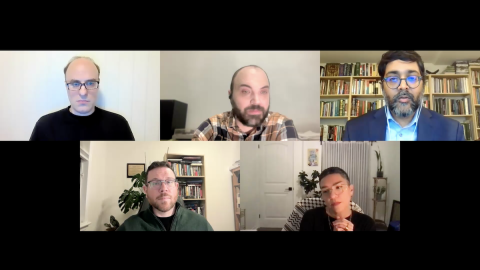Why I will no longer post on Elon Musk’s X
The Guardian’s decision earlier this week to stop posting on X finally prompted me to take the same step, one I have been contemplating for some time. Whereas the decision of the Guardian, which has 27-million followers, is consequential, my decision (with my 1,018 followers) is not. Still, for me, it is important to dissociate myself from what Musk has made of X.
Since he bought Twitter and renamed it X, Musk has changed it for the worse. The Guardian said it was motivated to leave by the growth in the platform’s openness to far-right conspiracy theories and racism, made especially evident during the U.S. presidential election campaign, which “served only to underline what we have considered for a long time: that X is a toxic media platform and that its owner, Elon Musk, has been able to use its influence to shape political discourse.”
I agree. For me, everything about the app is increasingly troubling. Bots are everywhere -- and apparently welcomed. Content moderation has declined, except, it seems, for those who are critics of Musk. Disinformation and conspiracy theories appear to be welcomed as never before. Most welcome of all are the views of Musk himself. According to a new analysis conducted by the Center for Countering Digital Hate, Musk’s political posts on X since he endorsed Trump in July have received more than twice as many views as all US paid political campaign ads that X has recorded in its political ads disclosure dataset in the same period.
As Joe Mulhill, director of research for Hope Not Hate has noted, “Elon Musk is himself inculcated with radical right politics. So, [X] is behaving much more like a bespoke platform, created by the far right. This marks it out significantly from any other platform. And it’s extremely toxic, an order of magnitude worse, not least because, while it still has terms of service, they’re not necessarily implementing them.”
It’s hard to walk away, even though my use of the platform has dwindled for months. But there are alternatives. Two of the best are the reasonably well-known LinkedIn, which has morphed from a job board to a more Twitter-like platform (with no limiting character restrictions) and the relatively new BlueSky, which has gained an additional 1.25-million users since the U.S. election.
BlueSky is interesting. While it works a lot like Twitter (X), not surprising given it was conceptualized by Twitter co-founder and former CEO Jack Dorsey. But, unlike X, it is a decentralized social network with no central authority. It is an open-source platform that allows different social media apps to talk with each other. There are several excellent guides for those of us newly signing up to BlueSky – two of which you can find here and here.
Leaving X is one of the few (however trivial) steps I can take as I join many others in trying to figure out how we as a society can deal with platforms to minimize their many harms while preserving what is wonderful about the digital realm.
This challenge will only grow harder with the news out of Washington this week that President-elect Trump, in the name of stopping censorship, plans to impose heavy fines on social media services that limit or even flag misinformation and disinformation and severe penalties on government agencies, civil servants, researchers, civil society groups, or academic institutions that aid in such initiatives.
As we collectively search for what to do, I look forward to connecting with you on BlueSky or LinkedIn sometime soon. We have a lot to discuss about how to protect freedom of expression while minimizing content that is genuinely harmful.
